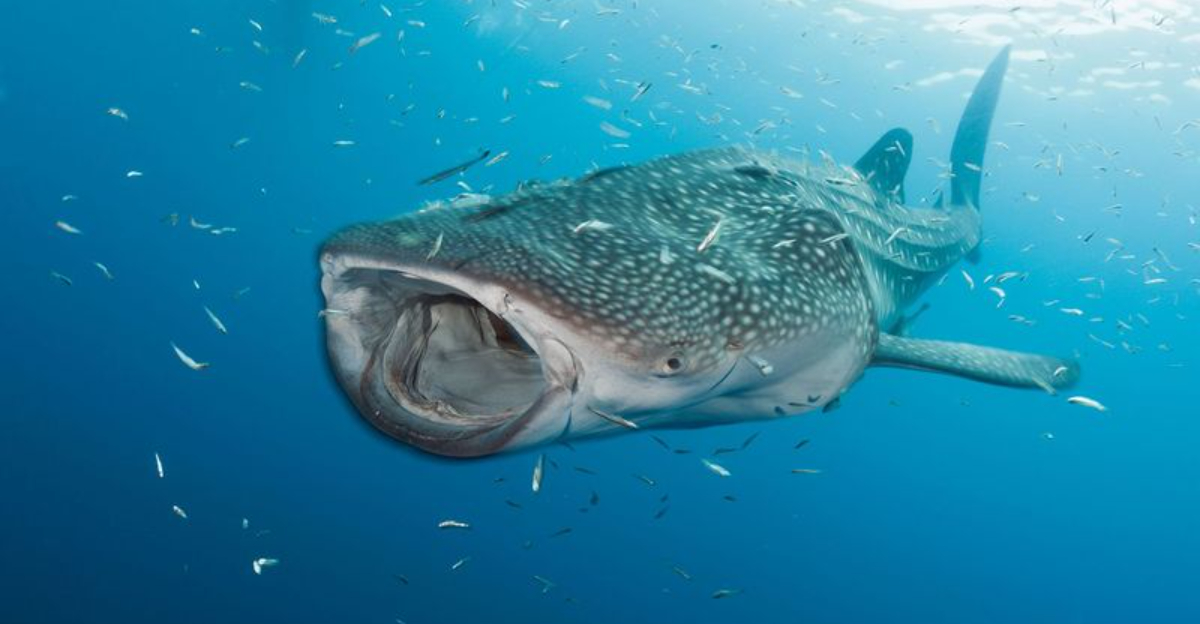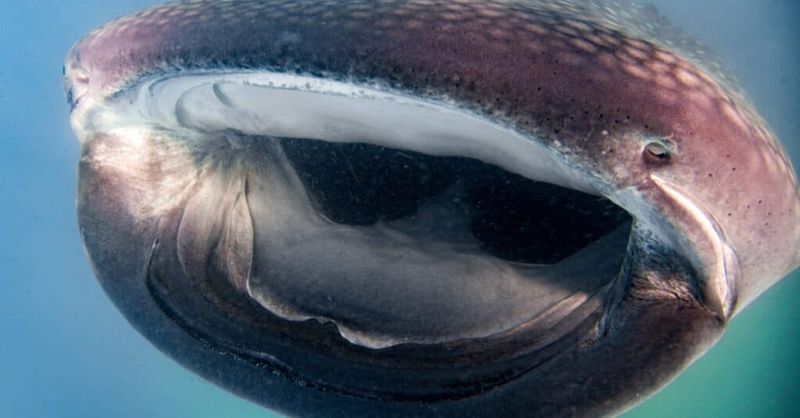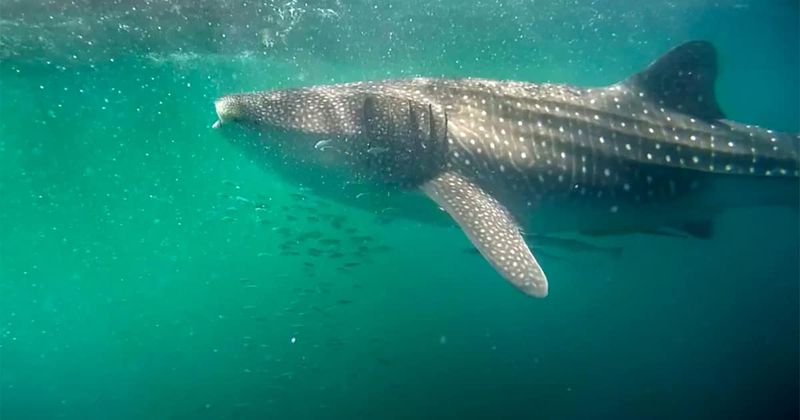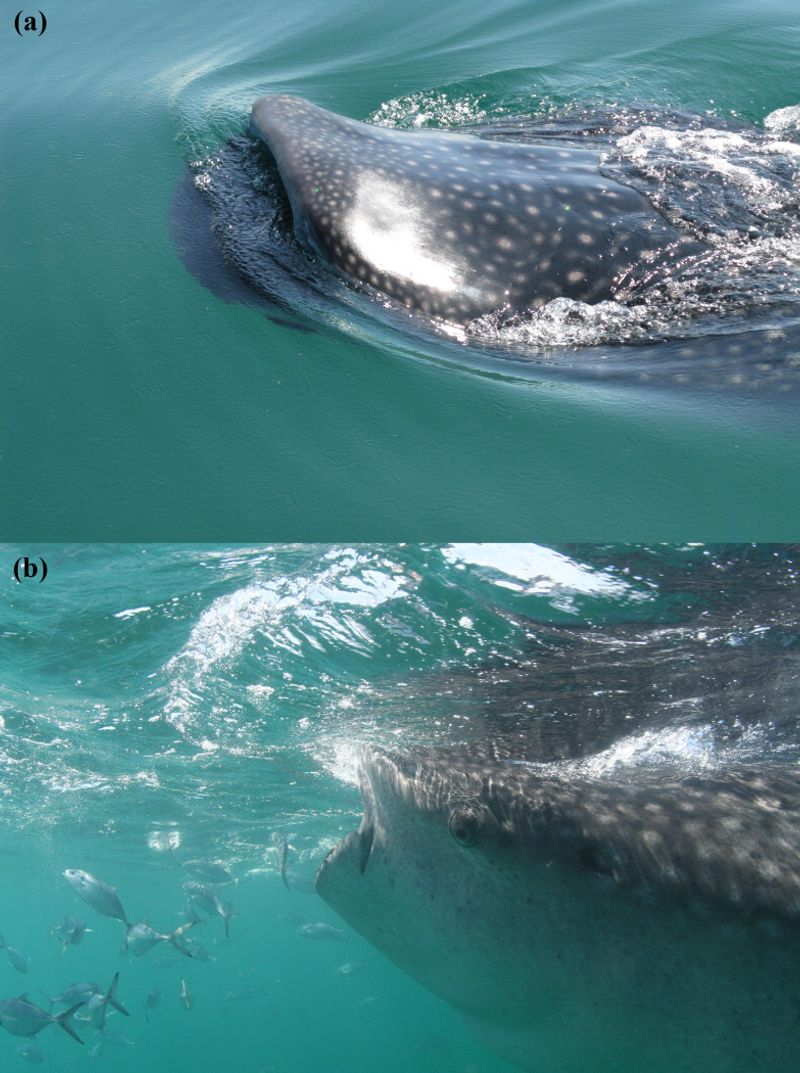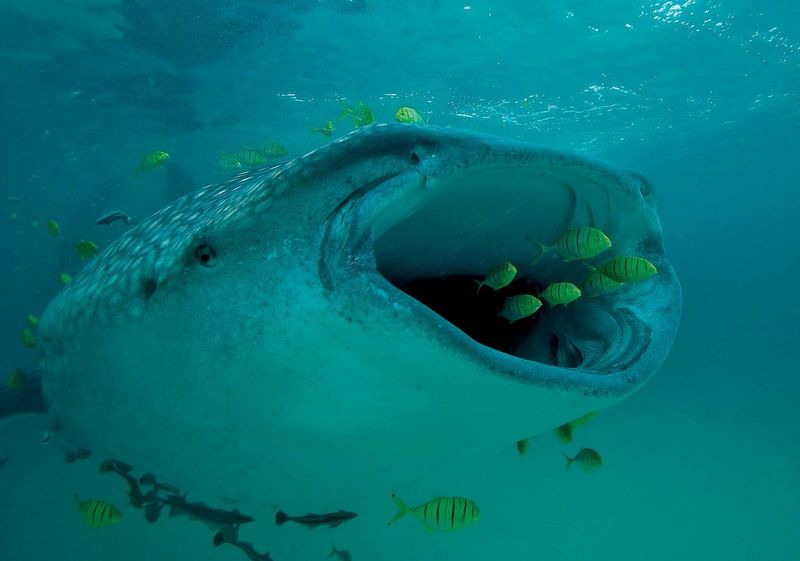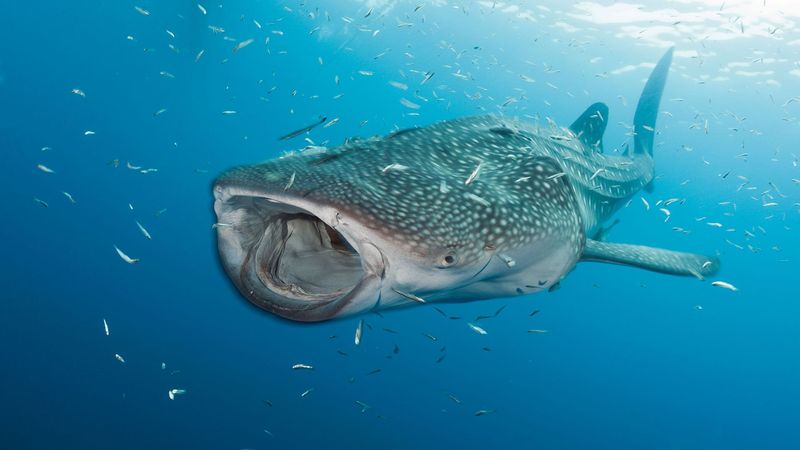Whale sharks, the largest fish in our oceans, have a surprising way of eating. Despite their massive size—growing up to 40 feet long—these spotted giants don’t hunt like other sharks. Instead, they filter tiny food from the water, gulping in plankton, small fish, and fish eggs. This special feeding method helps these peaceful ocean wanderers thrive while maintaining their gentle reputation.
Mouthy Marvels: Special Feeding Equipment
Imagine having a built-in food strainer in your mouth! Whale sharks possess over 3,000 tiny teeth, but these aren’t used for chomping prey. Instead, their enormous mouths (sometimes spanning 5 feet wide) contain specialized filter pads and gill rakers that work like living sieves.
These mesh-like structures trap food particles while allowing water to flow through. The process resembles using a colander to strain pasta, except it happens continuously as the shark swims. When feeding, a medium-sized whale shark can filter more than 600,000 liters of seawater every hour!
Scientists studying these structures have discovered they’re perfectly designed to capture tiny organisms while requiring minimal energy. This efficient system explains how such enormous animals survive on such small food items—proof that sometimes the biggest solutions come in the tiniest packages.
Swimming Vacuum Cleaners: Ram Feeding Technique
Have you ever seen a vacuum cleaner moving through water? That’s essentially what whale sharks do when they practice ram feeding. Swimming forward with their giant mouths wide open, these ocean giants create a living net that captures everything in their path.
Water rushes in as they glide forward, bringing along countless plankton, krill, and small fish. The sheer volume of water processed is staggering. Their forward motion creates pressure that pushes water through their filtering system, trapping food while expelling clean water through their gills.
Ram feeding is especially effective when whale sharks encounter dense patches of food, like fish egg blooms or plankton swarms. They’ll often swim in zigzag patterns through these areas, maximizing their food intake with each pass. This method works because of their streamlined bodies, which allow them to move efficiently while keeping their mouths open.
Suction Specialists: Creating Underwater Currents
When food is concentrated in one spot, whale sharks become underwater vacuum experts! Unlike ram feeding, suction feeding involves actively pulling water into their mouths—creating powerful currents that draw in nearby plankton and small creatures.
The process starts when a whale shark spots a promising food patch. Suddenly, it stops swimming forward and begins expanding its pharyngeal cavity (throat area), creating negative pressure. This rapid expansion acts like a powerful vacuum, pulling in surrounding water and food in quick, strong gulps.
What makes this technique remarkable is how precisely whale sharks can target specific food patches. They’ll position themselves vertically in the water, a behavior called “bottling,” and suck in dense food clouds with surprising accuracy. This targeted approach helps them conserve energy while maximizing their food intake—a smart strategy for an animal that needs to eat constantly to maintain its massive size.
Evolutionary Advantage: Why Bigger Means Better
Size matters tremendously in the filter-feeding world! The whale shark’s enormous body isn’t just impressive—it’s a brilliant evolutionary adaptation that makes their feeding strategy possible. Their massive size allows them to process incredible volumes of water without expending too much energy.
Large bodies also mean large mouths and filtering systems, increasing the surface area available for trapping food. This efficiency explains how these giants can sustain themselves on microscopic organisms. Additionally, their size provides another key advantage: whale sharks can store energy reserves in their thick skin and muscle tissues, helping them survive when food sources are scarce.
The relationship between size and filter feeding creates a positive feedback loop. Effective filter feeding allows whale sharks to grow larger, which in turn makes their feeding even more efficient. This evolutionary masterpiece has helped these magnificent creatures thrive for millions of years, perfecting a feeding strategy that’s both gentle and incredibly effective.
Ocean Buffet: The Diverse Diet of Gentle Giants
Who says picky eaters can’t grow big? Whale sharks might be selective about their feeding method, but they’re surprisingly open-minded about their menu choices! Their primary food sources include plankton, krill, and small schooling fish—essentially anything small enough to be filtered through their specialized feeding system.
During certain seasons, these giants seek out specific feeding opportunities. They’ll travel thousands of miles to reach areas with fish spawning events, where they feast on nutritious fish eggs. At other times, they target dense swarms of krill or crab larvae that provide protein-rich meals.
Fascinatingly, researchers have discovered regional differences in whale shark diets. Those in the Gulf of Mexico consume different prey than their counterparts near Australia or the Philippines. This dietary flexibility explains their wide distribution across tropical oceans worldwide, allowing them to adapt to local food availability while maintaining their gentle, filter-feeding lifestyle.
